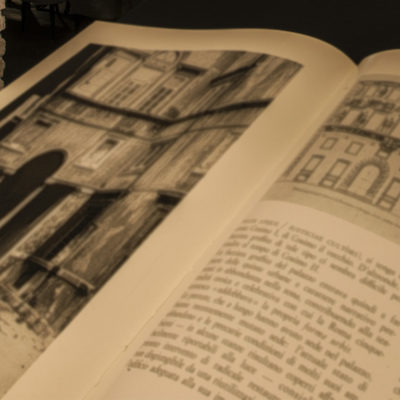The palazzo that is today home to D.O.M Hotel was erected in 1600 directly behind the church of Santa Lucia del Gonfalone, which was built by the Gonfalone Fraternity. Caretakers of the church since the 1500’s, the group commissioned the construction of a single building with multiple floors at the same time that the “Carceri Nuove”, or New Prisons, were built, just in front of the building. In 1764, the restoration of both the church and palazzo were entrusted to architect Marco David and 100 years later, architect Francesco Azzurri and painter Mariani renovated the church’s interior. Stone blocks from the church’s original marble flooring were moved to the palazzo as part of the renovation. In 1912, the Carthusians came to own the building and after which, the Claretian Missionaries bought both the church and palazzo, converting the latter into a male monastery. In 1968, the entire palazzo was sold to a private company, Società Cinesette, who once again renovated the building, transforming it into office space and renting it out to the Italian Ministry of Justice until 2009.
Today, Via Giulia remains one of Rome’s most fascinating and hidden gems. The buildings, courtyards and noble coat of arms that line the street, along with monumental works such as the “Sofa of Via Giulia” made up of gigantic blocks of travertine that were once intended to be the foundation of the tribunal palace, are extraordinary testimony to the neighborhood’s rich history which predates thousands of years.
The construction of Via Giulia (once an exceedingly winding street known as Via Magistralis) is partially accredited to Pope Julius II, who delegated the project to architect Donato Bramante in 1508 with instructions to render it recta: straight. In the centuries that followed, the street was home to some of the most prominent patrician families including the Sacchetti, Ricci and Chigi dynasties. During the papacy of Leo X (born Giovanni de Medici), Via Giulia was home to numerous gardens and many prominent artists, including Raffaello, Benvenuto Cellini, and later, Francesco Borromini.








